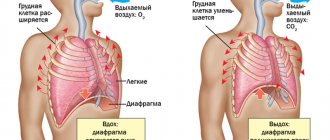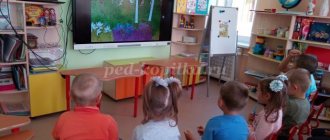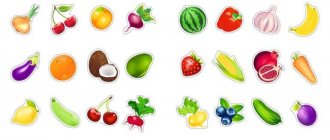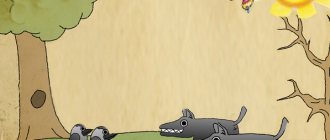Arranging fish pictures into groups
There are a lot of cards included, you don't have to use them all. Choose pictures that are appropriate for the child's age. To make it more interesting for preschoolers to get acquainted with underwater inhabitants, and to expand their understanding of fish species, you can offer exciting games. One of these games is the distribution of cards into groups: sea fish, river fish, predatory fish, aquarium fish. Preschoolers play this game with great enthusiasm.
Pictures of sea fish with names for children
The pictures introduce preschoolers to such interesting sea inhabitants as:
- shark;
- stingray;
- flounder;
- clown fish;
- halibut;
- sea Horse;
- sawfish;
- mackerel;
- angel fish;
- hammerhead fish;
- tuna;
- sea ruff;
- sea bass;
- fugu fish;
- sailboat;
- herring;
- flying fish.
Names of river fish for children
Preschoolers should know river fish even better than sea fish, because these representatives of underwater fauna live close to us, in rivers and lakes, and are caught by fishermen. This:
- crucian carp;
- pike;
- river ruff;
- river perch;
- gudgeon;
- bream;
- zander;
- catfish;
- sturgeon;
- silver carp;
- carp;
- trout.
Predatory fish
This category includes freshwater and marine life. That is, children need to be explained that predators are found in the seas, rivers and lakes. These are fish such as:
- shark;
- pike;
- zander;
- ruff;
- piranha;
- burbot;
- acne;
- barracuda;
- moray eel.
Aquarium fish
Children especially like to look at pictures of bright and cute fish that live in aquariums. Preschoolers tell what aquarium fish they know and get acquainted with unusual species that they did not know about before. Here are some aquarium inhabitants that can be offered to preschoolers for acquaintance:
- goldfish;
- angelfish;
- guppy;
- swordtails;
- bettas;
- discus;
- zebrafish;
- telescopes;
- neons;
- lionheads.
Homework on the topic: “Pisces” 5-6 years
Lexical topic “Pisces”
(for children 5-6 years old)
Parents are recommended:
- tell your child about fish (sea, freshwater, aquarium);
- pay attention to the peculiarities of living, feeding, structure and breathing of fish. — answer the questions: What do fish have instead of legs? (fins) Why can they breathe in water? (have gills) What is the body of a fish covered with? (scales) - look at illustrations of fish with your child.
— talk about aquarium fish, their names, ways to care for them.
Dictionary:
Nouns:
fish, perch, bream, pike, crucian carp, ruffe, roach, catfish, guppy, goldfish, swordtail, angelfish, catfish;
fry, eggs; river, pond, lake, aquarium, body, gills, tail, fins, scales; algae, fishing, predators. Adjectives:
freshwater, aquarium, river, sea, predatory, nimble, silvery, fast, bright, playful, fishy, fishy.
Verbs:
diving, frolicking, playing, hiding, jumping out, splashing, breathing, eating, fishing, catching.
DIDACTICAL GAMES AND EXERCISES:
1. “Name the parts of the fish’s body”: Body, head, eyes, mouth, fins, tail, gills, scales, back.
2. “Call it affectionately” (formation of diminutive adjectives).
Herring is a herring, crucian carp is crucian carp. Perch, pike, ruffe, catfish, angelfish, flounder, catfish, shark, guppy, goldfish.
3. “One - many (plural): fish - fish, perch - ... pike - ... fin
- ... crucian carp - ... angelfish - ... catfish - ... whitebait - ... scale - ...
4. “What kind of fish?” Fish (what?) - predatory, fast, dexterous, slippery, sea, river, aquarium, lake, pond, scaly, etc. Pike (what?) - cunning, ... Crucian carp (what) - small, ... Ruffs (what ) - nimble, ... Shark (which one?) - predatory..
5. “Who lives where?” In the lake? - lake. In the sea? Marine. In the ocean? Oceanic. In aquarium? Aquarium.
6. “Choose actions”: Fish (what does it do?): swims, wags, hides, catches, hides, burrows, spawns (spawn), spawns, dwells, lives, etc. Pike (what does it do?) – swims, hunts, dives, breathes, eats, jumps out... Catfish (what is it doing?) - sleeping,...
7. “Count the catch” (coordination of numerals with nouns in gender, number and case): One minnow, three minnows, five minnows (Angelar, swordtail, pike, goldfish, shark, crucian carp.)
8. “Whose?” (formation of possessive adjectives) The shark’s head is ... a shark’s. Pike has fins - ...Fish has eyes - ...
9. “Remember and repeat” Ruff, catfish, gudgeon are river fish. Flounder, pink salmon, and herring are marine fish.
10. “The fourth odd one” Shark, catfish, pike, ruff. Fins, fur, scales, gills. Puddle, sea, river, aquarium. . Shark, moray eel, pike, swordtail. River, lake, sea, bridge. Crucian carp, pike, cod, catfish.
11. “Tell about the fish”: 1. The name of the fish where it lives. 2. Body parts, size, color. 3. Behavior. 4. What does it eat? 5. How offspring appear. 6. What is the benefit or harm.
Fourth wheel
This is another interesting game for older preschoolers. The teacher lays out 4 cards in a row, and the children try to understand which image is superfluous and give reasons for the choice.
Here are examples for the game:
- herring, silver carp, sailfish, mackerel;
- shark, moray eel, clown fish, piranha;
- trout, zebrafish, angelfish, guppies;
- tuna, halibut, flounder, swordtail;
- pike, stingray, carp, crucian carp.
Say it kindly
The game teaches preschoolers to form the diminutive form of nouns. The player names the fish shown in the picture, then transforms the name:
- pike perch - pike perch;
- pike - pike;
- crucian carp - crucian carp;
- bream - bream;
- stingray - stingray;
- shark - little shark;
- burbot - burbot;
- catfish - catfish.
Card index of games for preschoolers on the theme “Pisces”
Card file of exercises for preschoolers with disabilities on the topic “Pisces”
Author: Demyanchenko Natalya Nikolaevna, teacher-speech pathologist, Municipal budgetary preschool educational institution compensatory kindergarten No. 6 “Golden Key” Municipal entity Timashevsky district This selection of exercises was developed to help educators, teacher-defectologist working with young children and preschoolers with disabilities. The practical information presented can be informative for parents of this category of children who attend and do not attend preschool educational institutions as recommendations for the additional development of the child. The goal is the formation of sensory standards and the development of speech of preschool children with disabilities on the topic: “Fishes”. Objectives: continue to develop the ability to compare fish toys with their images, with planar geometric shapes, examine them by touch, replenish and activate the vocabulary on the topic, develop tactile-motor perception;
cultivate interest in obtaining the results of activities, careful attitude towards benefits. Exercise “Find a Pair”
The goal is to compare paired objects and paired pictures. Tasks: teach (continue to teach) to find fish toys according to verbal instructions, compare them with their images; develop perception, attention switching, memory; cultivate a caring attitude towards benefits. Materials: fish toys, other items from the play area; pictures of fish, outlines of fish depicted on a sheet of paper; container. Conditions: The teacher invites the child to find only fish among the play objects and collect them in a container. Then find a pair among the images of fish by comparison. Then he suggests finding the outline of the fish shown in the picture. 1st century The child completes the task independently with a little help from an adult. 2c. The teacher, commenting on the actions, encourages the child to join and complete the exercise independently.
Exercise “Find”
The goal is to develop tactile-motor perception. Objectives: continue to teach how to examine objects by touch, continue to compare them with their image; develop tactile-motor perception; cultivate a caring attitude towards toys. Materials: play set of fish, containers; fabric bag. Conditions: The teacher invites the child to find and show only fish among the presented game items. Then offer to put your hand into the bag, take and hold the object one at a time, tactilely examine it in the bag, and identify the fish. 1st century The child completes the task independently with a little help from an adult. 2c. The teacher and the child perform the exercise together.
The teacher makes emotional comments, encourages the child to join his actions and complete the exercise independently. Exercise “What does it look like?”
The goal is to develop the perception of form. Objectives: continue to teach how to examine play objects by touch (toy fish), learn to compare them with planar geometric shapes: oval and triangle; accumulate ideas about the geometric shape of an oval; develop visual perception; cultivate interest in organized activities. Materials: fish toys, images of fish, planar geometric shapes oval and triangle. Conditions: The teacher invites the child to trace the outline of the fish shown in the picture with a pointing gesture, first all over it, then trace only the body, and among the figures find the one that resembles the body (oval) and only the tail, and find the one (triangle) that resembles the tail . Invites the child, next to the image of a fish, to assemble a schematic image of a fish from these figures (triangle and oval). 1st century The child completes the task independently with a little help from an adult. 2c. The teacher and the child perform the exercise.
The teacher strives for the child to independently complete the exercise or fragments of independent implementation. Exercise “Fish”
The goal is to activate the child’s vocabulary. Objectives: to help replenish the child’s passive vocabulary and activate it with noun words that name parts of the fish’s body: fin, head (eyes), tail, scales; develop visual and auditory attention, memory; cultivate interest in organized activities and respect for benefits. Materials: pictures of fish; fish toy. Conditions: The teacher draws the child’s attention to a fish toy and pictures of fish.
-Where is the fish?
or Show the fish. - The fish has a head, show me. -Where are the eyes? — Fins (shows) help fish swim in the water. - Show me the fins. — The body of a fish is covered with scales. Scales protect the body and help swim. 1st century The child participates in conversation using verbal speech. The teacher provides the child with all possible assistance. 2c. The teacher forms the child’s understanding of the words: fish, head, tail.
The child participates in the conversation using sign language or the teacher performs the exercise together with the child. Game situation “Imagine”
The goal is to develop speech understanding. Objectives: to promote understanding of the phrase: a fish swims and the ability to imitate the corresponding action; develop stability and switchability of attention, motor memory; cultivate interest in activities. Materials: pictures of fish, toy fish. Conditions: The teacher invites the child to remember and show all the fish, then draws attention to the fact that the fish swims in the water “like this”: he connects his hands, straightens them, and comments: the fish swims up, down, left, right (the demonstration is accompanied by a demonstration ).
- Do you want to play fish?
- Then let's go together... (provides all possible assistance to the child). 1st century The child performs movements by imitation and independently matches the text he hears and remembers. 2c. The teacher pronounces it, performs it for the child and with him, helps him perform and remember the movements.
We recommend watching:
Didactic games with sand for children 3-4-5 years old. Didactic games (verbal) for children 5-6 years old. Didactic game for children 6-9 years old. Fun vegetable garden Didactic game for younger preschoolers
Similar articles:
A story about fish for children 6-7 years old
About burbot fish for children
Didactic game “Collect a caterpillar” for children 5-6-7 years old
Didactic game “Find a Pair” for children 3-4 years old
Didactic game "Flowers" for children 5-6-7 years old
Name the big fish
The teacher explains that an object that seems huge is named using the appropriate suffix. Next he shows the pupils pictures. Children try to transform the names of the fish on display. For example:
- pike - pike;
- burbot - burbot;
- pike perch - judge;
- sturgeon - sturgeon;
- shark - shark;
- slope - slope.
Intellectual game for primary schoolchildren with answers. Pisces theme
A game about fish for primary school children “What do we know about fish”
Author: Ryabichenko Nadezhda Vladimirovna, primary school teacher of the Municipal Educational Institution “Mikhailovskaya Secondary School” of the Kikvidzensky district of the Volgograd region Description of the material: I bring to your attention an intellectual game about fish that can be used during extracurricular activities , as well as in a summer health camp. Goal : organizing children's leisure time in the form of intellectual games. Objectives: - consolidate children's knowledge about fish;
— develop logical thinking, memory, attention, intelligence, intellectual and cognitive abilities of students; - to develop interest in studying the world around us. Progress of the game
I. Quiz about fish. 1. This predatory fish has fantastic greed. It eats not only other fish, but can also eat frogs, mice, rats and even birds. This fish can also eat its relatives - smaller fish. (pike)
2. Large fish without scales, living in freshwater bodies.
A special feature of this fish is its long mustache located on the sides of the upper and lower jaws. Lives at depth, prefers dark places in water bodies, lies in recesses and holes during the day, and hunts at night. (som)
3. You can easily recognize this small predatory fish by its appearance: its body, covered with small scales, has transverse dark stripes.
(perch)
4. Everyone knows hedgehogs.
If you see this animal, go up to it and want to touch it, it will definitely curl up into a ball and you will be pricked by its prickly needles. But in nature there is a fish called the underwater urchin, since it has many spines. Which? (ruff)
5. This fish can be confused with a roach, as the fish are very similar.
However, unlike roach, this fish has golden scales and fiery red fins. (rudd)
6. The fish resembles a snake in appearance, as it has a long body.
Able to move on wet grass or soil, because it can go without water for several hours. (acne)
7. The benefits of fish oil, which is found in large quantities in sea fish, have been known since ancient times.
The liver of this sea fish is also a source of fish oil. (cod)
8. A small freshwater fish that got its name because there are spines on its body in front of the dorsal fin.
(stickleback)
9. Fish is better known to us as sea fish, but can also live in freshwater rivers.
Its distinctive feature is its flat oval body and the location of its eyes on one side. (flounder)
II. Collect the illustration and name the fish. Each participant in the game is given envelopes with an illustration of a fish. The illustration is cut into parts. At a signal, children open the envelopes and connect the parts of the illustration. After the whole picture is collected, you need to name the fish.
Answer:
pike perch
III. Proverbs about fish. You need to solve puzzles and read correctly proverbs about fish.
Answer:
Don’t threaten the pike with the sea.
Answer:
Here's a brush for you, cook a pot of fish soup.
Answer:
They caught crucian carp, they will also catch pike.
Answer:
There are no fish without bones.
Answer:
The fish is small, but the fish soup is sweet.
IV. Crossword "Recognize the fish."
In this task, look at and recognize the fish from the illustration, write their names in the crossword cells. Horizontal answers:
1. bream 2. gudgeon 3. crucian carp 4. silver carp
Vertical answers:
1. tench 2. carp 3. burbot 4. roach 5. perch 6. catfish
V. Find out the work and name the author. You need to name works that talk about fish. 1. The pike began to sing to the mouse - He didn’t hear a sound: The pike’s mouth is open, But you can’t hear what he’s singing... (Samuel Marshak “The Tale of a Stupid Mouse”)
2. “How can he live in the world without whiskers and scales?
We fish could not split our tails! He is not like a cancer, nor like us - in very many ways! Isn’t this miracle related to the ugly octopuses?” - these words were spoken by the fish to a boy who was once fishing and fell into the water. (Maxim Gorky “The Case of Yevseyka”)
3. A story in which a formidable sea fish had to be killed because it could grab the boys who were swimming in the sea and did not notice it.
(L.N. Tolstoy “Shark”)
4. A tale about a fish and a bird who were friends, but one day they had a fight because the fish was able to deceive the bird and eat its prey - a worm.
(D.N. Mamin-Sibiryak “The Tale of Sparrow Vorobeich, Ruff Ershovich and the cheerful chimney sweep Yasha”)
5. The children put the hero in this work in a boat made from pieces of pine bark and launched the boat along the river.
The evil pike hoped to feast on it, so it swam after the boat, thinking that the seagulls would throw our hero into the water. (V. Bianchi “Mouse Peak”)
6. A fairy tale in which small fish helped a girl escape from an old toad and her son.
They gnawed the stem of a water lily leaf, and the leaf the girl was on floated down the river. (H.H. Andersen “Thumbelina”)
VI. Find the words. In the task you need to make as many words as possible from the word “Fishing”. Sample answers:
catch, ox, rubbish, target, turnover, variety, cable, forehead, bolt, fisherman, growth, trunk, thief, gate, ditch, forest, pillar, swamp, life, cheese, board, cable, collection, hair , robot, island.
Download Intellectual game for junior schoolchildren “What do we know about fish”
We recommend watching:
Fisherman's day at the summer camp. Scenario based on Dudnikov’s fairy tale “Marriage of convenience” Quest game for junior schoolchildren in grades 3-4. Topic: Scotland Game "Detectives" for schoolchildren. Chainword script for younger schoolchildren with answers on the topic “Hike”
Similar articles:
Intellectual competitions for primary schools
Intellectual games for primary schoolchildren










